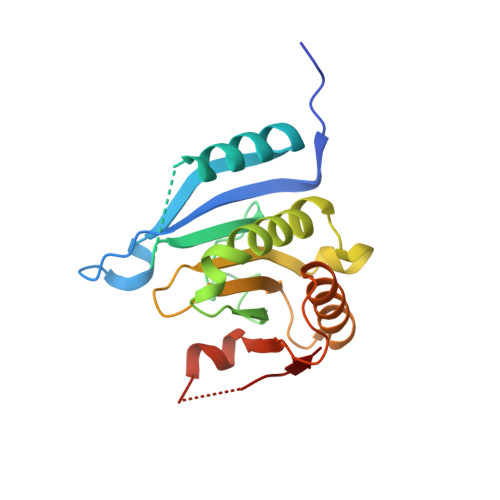Design of Cell-Permeable Inhibitors of Eukaryotic Translation Initiation Factor 4E (eIF4E) for Inhibiting Aberrant Cap-Dependent Translation in Cancer.
Cardenas, E.L., O'Rourke, R.L., Menon, A., Meagher, J., Stuckey, J., Garner, A.L.(2023) J Med Chem 66: 10734-10745
- PubMed: 37471629
- DOI: https://doi.org/10.1021/acs.jmedchem.3c00917
- Primary Citation of Related Structures:
8SX4 - PubMed Abstract:
Eukaryotic translation initiation factor 4E (eIF4E) is an RNA-binding protein that binds to the m 7 GpppX-cap at the 5' terminus of coding mRNAs to initiate cap-dependent translation. While all cells require cap-dependent translation, cancer cells become addicted to enhanced translational capacity, driving the production of oncogenic proteins involved in proliferation, evasion of apoptosis, metastasis, and angiogenesis, among other cancerous phenotypes. eIF4E is the rate-limiting translation factor, and its activation has been shown to drive cancer initiation, progression, metastasis, and drug resistance. These findings have established eIF4E as a translational oncogene and promising, albeit challenging, anti-cancer therapeutic target. Although significant effort has been put forth toward inhibiting eIF4E, the design of cell-permeable, cap-competitive inhibitors remains a challenge. Herein, we describe our work toward solving this long-standing challenge. By employing an acyclic nucleoside phosphonate prodrug strategy, we report the synthesis of cell-permeable inhibitors of eIF4E binding to capped mRNA to inhibit cap-dependent translation.
- Department of Medicinal Chemistry, College of Pharmacy, University of Michigan, Ann Arbor, Michigan 48109, United States.
Organizational Affiliation:


















